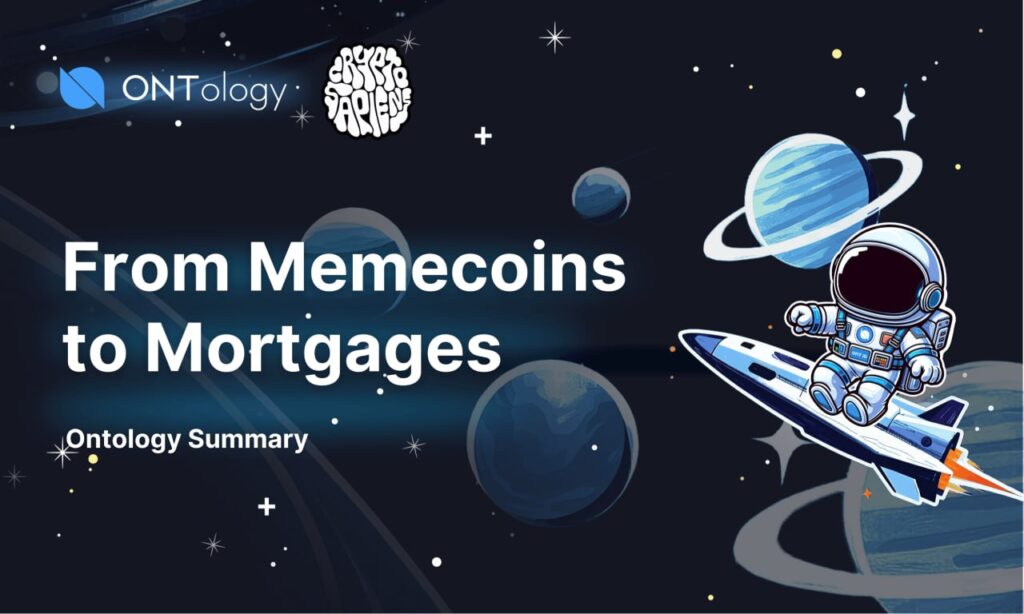What does this mean?
DeFi is no longer just about yield farming and memecoins—it’s evolving into a more accessible, meaningful system that could power everything from mortgages to decentralized identity. In this special Twitter Space hosted in collaboration with Ontology, builders and community contributors reflected on the past, present, and future of DeFi, covering staking, real-world assets (RWAs), AI integration, and the growing social layer around decentralized finance.
Read the full post @ CryptoSapiens
🎙️ Featured Speakers
- Gramajo – Area51
- Barnabas – Ontology
- Humpty Calderon – Ontology
- Additional contributors from Idena, Arweave, and the extended EM community
Five core takeaways
1. DeFi began as sovereign money, and it’s still early
From Bitcoin to Ethereum to DeFi Summer, the movement started with a promise of permissionless access and programmable finance. Yet even today, most users haven’t scratched the surface of what’s possible. We’re still in the innovator stage.
2. Staking is evolving beyond tokens
What started as basic token staking has expanded to include liquid staking, restaking, and even staking non-financial contributions like uptime (Arweave) or time and intelligence (Idena). Staking now includes human effort and digital trust.
“In Idena, it’s not about money—it’s about meaning.” – Humpty
3. UX is still the biggest blocker
DeFi is powerful, but hard to use. Complex wallets, jargon, and poor onboarding remain major hurdles—especially for global users. However, creators, localized content, and AI assistants are starting to bridge this gap.
“People need to learn dozens of new terms before they can try anything.” – Barnabas, Ontology
4. Real-world assets (RWAs) are coming onchain
From tokenized real estate to Pokémon cards, DeFi is starting to accept value outside the crypto-native world. RWAs unlock new liquidity, collateral types, and financial access.
“I listed my Bitcoin and Pokémon cards for a mortgage. The bank laughed. In DeFi, that’s collateral.” – Gramajo
5. Social + DeFi = New Behavior Layer
Mini apps on Farcaster and integrations with tools like Coinbase Wallet are making DeFi feel like social media, not spreadsheets. You can now stake, swap, or tip from inside a social feed—a major UX shift powered by smart contracts and reputation.
Bigger picture
DeFi is merging with AI, RWAs, and social UX—reshaping how we define financial participation. The result? A system that’s not just decentralized, but also discoverable, human, and useful beyond the crypto bubble.
As these tools mature, we’ll likely see a new DeFi wave powered not by hype—but by utility, accessibility, and culture. Staking will get smarter. Onboarding will get smoother. And your assets—whether crypto, content, or collectibles—will start to matter in ways TradFi never allowed.
TL;DR
DeFi is growing up. What began as yield farming and governance tokens is turning into a real, usable system with human-centered staking, onchain reputation, real-world assets, and AI-powered UX.
The next version of DeFi is simpler, more inclusive, and more real—and it’s already starting to show.
📚 Related Reading
- Truth Crisis in Stable Coin Adoption
- Code, Clout & Crypto: Soulbound Tokens & Privacy in Onchain Games
- Explore ONT ID and decentralized reputation
👉 Follow Ontology on X for more deep dives on staking, DeFi, digital identity, and the future of trust.
👉 Follow Ontology on Medium & hear more from our community.

